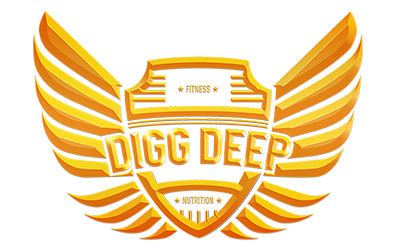Food is interesting.
And the foods people eat together are even more so.
Ask ten people what they had for dinner and you will get a wide range of answers, ranging from a bowl of cereal to a four-course meal.
But one thing I’m always curious about it how people put their meals together. And the reason I’m curious is because it makes a big difference.
For example, many people commonly eat oatmeal (topped with sugar) and a piece of fruit for breakfast. And people also commonly tell me how this meal does not keep them full and they are hungry an hour later.
Normally, if you eat this meal with a couple eggs or a container of Greek yogurt, it will keep you full three times longer, even though it’s just an extra 150 calories.
Why?
Because foods are processed differently in your body depending on their nutrient makeup.
Carbs are digested pretty quickly, which is what leaves you feeling hungry soon after eating them. Proteins and healthy fats take longer for your body to break down. So, if you combine a carb with a protein or fat, you stay full longer.
Pairing the carb and protein can also help better regulate your blood sugar levels, making you less prone to store fat, and possibly decrease your risk of developing chronic diseases.
And it could stop you from visiting the office candy jar so often.
Yep. It can matter that much.
That’s why it’s important to put thought into how your meals and snacks are structured.
Every day, our bodies need a certain amount of nutrients to keep it healthy. Some nutrients we need in large quantities, like carbs, proteins, and fats. Other nutrients we need in small quantities, like vitamins and minerals.
Everyone needs different amounts of nutrients based on their age, activity level, height, gender, and weight.
Food is used to replenish these nutrients daily to keep our bodies running efficiently.
Eating too many unbalanced meals is a recipe for disaster and disease.
So what does a balanced meal look like?
Let’s split foods up into four categories… proteins, carbs, healthy fats, and fruit/veggies. Starchy vegetables (potatoes, corn, peas, etc.) will go into the carb category. Even though fruit mostly contains carbs, we will keep them in a separate category.
Foods are made up of various nutrients, and most foods can be put into a category based on which nutrient they naturally provide the most (before sugars or other additives are added.)
Here are some common foods in each category:
- Proteins– meat, seafood, poultry, eggs, low-fat dairy products
- Carbs– oatmeal, bread, pasta, quinoa, rice, corn, peas, beans, potatoes
- Healthy fats– avocado, nuts, nut butters, seeds, oils
- Fruit/veggies– self-explanatory
There are other foods that don’t really fit comfortably into one category or another based on their nutrient profile (ex. milk and cheeses, etc.). Where they fit in your eating plan would depend on what nutrients you need from those foods.
When putting a meal together, you generally want to choose one food from three different categories.
From the breakfast example I gave above, the three categories would be carbs (oatmeal), fruit/veggie, and protein (eggs or yogurt).
An example of a balanced lunch would be chicken (protein), sweet potato (carb), and green beans (veggie). Three different categories.
Snacks are similar, but choose foods from two different categories. An example of a balanced snack would be an orange (fruit) and some almonds (healthy fat).
Throughout the day, you want to get a mix of different foods containing many different nutrients to create a well-rounded eating plan. Stick with the formula I gave above as a quick guide when planning your meals. Think about what category each food would fit under. Are there too many from one category or do you have a good mix?
Portion sizes and reducing one category over another (ex. carbs) will be based on the individual, his/her own personal fitness goals, and what works best for his/her body.




0 Comments